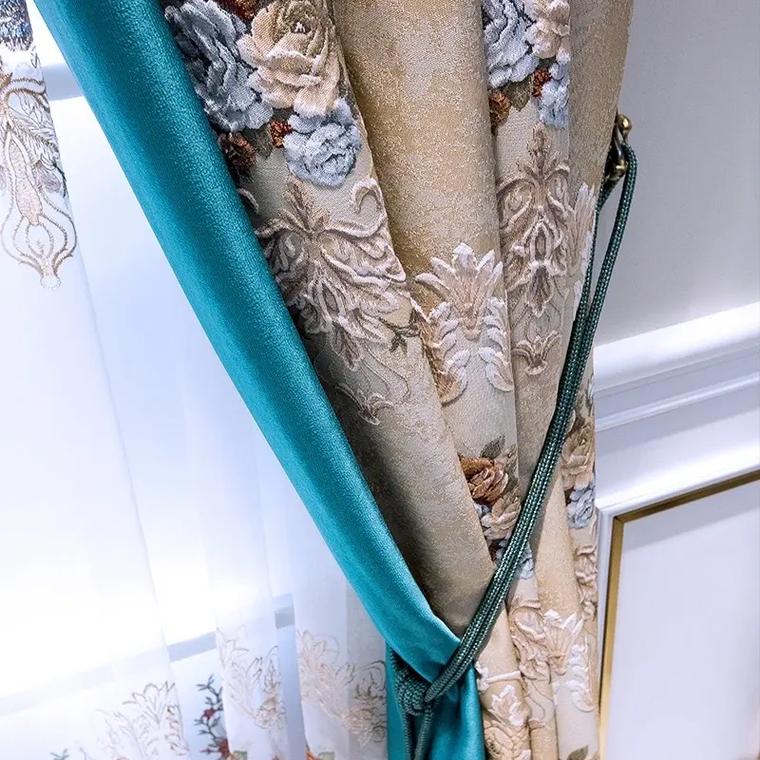


I keep a small wooden box under my workbench, filled with odds and ends: a frayed edge of vintage lace, a swatch of faded indigo cotton, even a single brass grommet bent into a smile. These aren’t mistakes—they’re reminders. Reminders that curtains, at their best, aren’t just fabric hung on rods. They’re the quiet glue holding a home together, the silent witnesses to coffee spills, bedtime stories, and the messy, lovely act of living.
It Starts With a Problem, Not a Product
Most people don’t call a curtain supplier because they want curtains. They call because something’s off.
Last spring, a woman named Clara reached out. “My living room feels cold,” she said. “Not temperature-wise—emotionally. My husband and I just moved in, and the windows feel… bare. Like the room isn’t ours yet.” I asked to visit. There, I noticed their windows were tall and narrow, with outdated aluminum frames. “They remind me of my grandparents’ house,” she admitted. “But I want our house to feel warm.”
We didn’t just pick a curtain. We solved for feeling. We chose a thick, brushed cotton in a warm terracotta—thicker than typical sheers, but not heavy—hung on a slim, matte-black rod to contrast the old aluminum. The key? Letting the curtains pool slightly at the floor, softening the sharp lines of the room. When Clara texted a week later, it wasn’t about the fabric. It was: “We sat on the couch last night, and for the first time, it felt like we live here.”
Or take the Johnson family, whose kids’ bedroom faced a noisy playground. “We need quiet,” the mom said, “but the kids hate ‘babyish’ things.” We layered a sheer linen outer panel (to muffle sound) with a removable blackout liner (for naptime), both in a bold geometric print the kids picked out. Now, the mom laughs: “They call it their ‘secret fort.’ And on rainy afternoons, I sit in the hallway and listen to them read—no more shouting over traffic.”
These aren’t “sales.” They’re collaborations. We don’t sell curtains; we solve for the heart of what a client needs, then translate it into fabric and form.
Fabric That Remembers How You Live
Walk through our storage, and you’ll hear us talk about bolts like old friends. “This linen? It wrinkles if you look at it wrong—but in a way that looks like you’ve lived in it, not like you neglected it.” “That bamboo blend? It’s cool to the touch, perfect for a sunroom where AC struggles.” We’re not just inventory managers. We’re curators of textures that fit lives.
Consider the client with a dog who sheds like it’s his job. He wanted curtains that didn’t trap fur but still felt luxe. We found a tightly woven cotton with a slight texture—hides pet hair better than smooth silks, but still drapes beautifully. “My couch used to be covered in fluff,” he said. “Now the curtains get the fur, and I just vacuum them. Game changer.”
Sustainability, to us, is about respect—for the planet and the people who make our fabrics. We source from mills that pay fair wages, use non-toxic dyes, and treat water like gold. When a client asks, “Is this eco-friendly?” we don’t list certifications. We say, “The flax in this linen was grown by a family in Ireland who sent us photos of their sheep grazing the fields. This curtain? It’s their sunshine, woven into yours.”
Custom Isn’t a Buzzword—It’s a Promise
“Can you make curtains for my sloped ceiling?” “What if I want the pattern to align perfectly at the corners?” These aren’t headaches. They’re invitations to get creative.
For a client with a circular window above their staircase, we drafted a curtain that followed the curve—no awkward bunching, no visible seams. For a boutique owner wanting “inviting but not pushy” window treatments, we chose a sheer voile with a subtle stripe, hung on hidden tension rods so they didn’t clutter the small space.
One project still makes my chest swell: a couple restoring a 19th-century schoolhouse. They wanted curtains that honored the building’s history but felt modern. We hand-stitched linen panels with a faint, homespun texture—no plastic rings, no metal grommets. Now, when they host tours, visitors ask, “Those are antiques, right?” They smile: “They’re new. But they feel like they’ve been here since the bell rang.”
More Than a Supplier—A Keeper of Your Story
The best part of this job? Watching curtains grow with you.
There’s the bride who bought ivory sheers for her wedding venue—now using the same fabric for her toddler’s room, saying, “It feels like a piece of that day, still with us.” The retiree who texted, “My curtains survived three moves—can you recommend a lining for my new sunroom?” We don’t just sell and disappear. Frayed hems? Mended free. Faded color? Advice on professional dyeing. Even a quick note: “Saw this oatmeal linen—thought of your kitchen’s warm tiles.”
Final Stitch: Curtains as the Soul of a Space
In a world of fast decor, curtains are slow. They absorb years of sunlight, laugh at spilled juice, and cradle midnight talks. They’re not just fabric—they’re the quiet, steady presence that turns a house into home.
We don’t make curtains. We craft companions. Pieces of cloth that learn your schedule, honor your memories, and make every room feel like it’s been waiting for you.
So whether you’re dreaming of billowy sheers that dance with sunrise or heavy drapes that hush a busy street, know this: when you reach out, you’re not just buying fabric. You’re inviting someone who cares to help you weave your window—and your life—into something beautiful.
After all, the best curtains? They’re the ones that make you look up and think, “These were made for me.”
Article link:https://www.vlefooena.com/the-threads-that-tie-a-house-to-a-home-how-curtains-become-part-of-your-daily-rhythm

No reply content